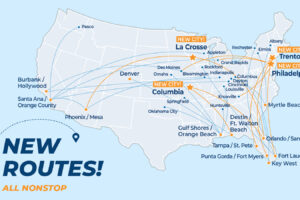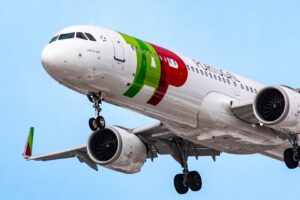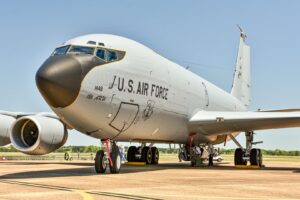
The Development of the S-42
The Sikorsky S-40 had laid the groundwork for Pan Am’s Latin American route system, but Pan Am was never fully satisfied with its compromise design,. Even before the S-40 first entered service, Pan Am technical adviser Charles Lindbergh was developing specifications for a streamlined airliner that could truly span the oceans and fulfill Pan Am’s intercontinental ambitions.
Two aircraft manufacturers made credible bids for Pan American’s next airliner; Igor Sikorsky wanted the chance to build improve the S-40, whose limitations he fully understood, and Glenn Martin wanted to expand his business from military to commercial aircraft. To hedge his bets against either company’s possible failure, and to stimulate competition, so that Pan Am would not be overly dependent on any one firm, Juan Trippe accepted both bids and ordered three planes from each company. On October 1, 1932, Pan Am placed a firm order for three S-42 aircraft, with an option for seven additional planes.
S-42 Design and Innovations
The S-42’s incorporated several important technological innovations. The plane’s all-metal construction, using the new aluminum allow known as duralumin, provided the strength and structural integrity to lift a remarkable payload of fuel, passengers, and cargo. To support that payload while providing the high-speed needed for fast cruising over long distances, along with stability in rough weather, the S-42 was designed with a remarkably high wing loading of 28.6 pounds per square foot; the wing loading of the S-42 was more similar to that of a high-performance racing plane, and was more than twice the wing loading of the Ford Trimotor, the most popular American airliner of the day. Such a high wing loading required other significant innovations, including a highly efficient airfoil, hydraulic flaps to lower takeoff and landing speeds, and newly-designed variable pitch propellers to provide both high power during takeoff and fuel efficiency during cruise.
S-42 Flights and History
The first S-42 was flight tested in April, 1934, and the aircraft quickly demonstrated its impressive abilities. On April 26 the plane lifted more than eight tons of payload to 16,000 feet, and on May 17 it climbed to a record of altitude of 20,407 feet while carrying over 11,000 lbs.
On August 1, 1934, Pan American conducted its own flight test of the S-42 before accepting the new plane into its fleet. Pan Am chief pilot Edwin Musick, Pan Am technical advisor Charles Lindbergh, and Sikorsky test pilot Boris Sergievsky flew the S-42 on a 1,242 mile course, carrying the equivalent weight of 32 passengers, a crew of five, and 2,000 Ib. of mail and cargo. The plane averaged 157.5 MPH during the test and set eight world records for speed, payload, and altitude.
On August 16, 1934, the S-42 flight-tested by Musick and Lindbergh was put into service on Pan Am’s Latin American routes out of Miami, and two days later the plane was christened Brazilian Clipper in Rio de Janeiro by the wife of Brazilian president Vargas. The new plane cut the travel time from Miami to Buenos Aires down to just five days, compared to the eight days required by the S-40. The S-42 was used extensively on Pan American’s Latin American routes and became a familiar sight at Miami’s Dinner Key terminal.

While the S-42’s impressive performance was a tremendous advance over Pan American’s previous aircraft, it had been designed to circle Caribbean and cross the Atlantic, and did not have the range for passenger service across the Pacific. But while the 2,400 mile distance from San Francisco to Honolulu was beyond the capacity of an S-42 carrying passengers, the longer-range Martin M-130 was still behind schedule when Pan Am needed to begin survey flights across the Pacific. The second S-42 built by Sikorsky, therefore, was stripped of all its passenger accommodations and fitted with extra fuel tanks to make the long flight between California and Hawaii.
The stripped-down plane, named Pan American Clipper, pioneered Pan Am’s routes across the Pacific during the spring, summer, and autumn of 1935.

S-42 Passenger Accommodations
The S-42 accommodated 32 passengers for daytime flights, in four separate compartments with eight seats each. (The ship’s relatively short range precluded the need for the sleeping berths provided on subsequent clippers.)
S-42 Technical Details
- Length: 69′
- Wingspan: 118′ 2″
- Max Gross Takeoff Weight: 38,000 lbs S-42, 40,000 lbs S-42A, 42,000 lbs S-42B
- Engines: Four Pratt & Whitney Hornet radial engines (7oo hp S-42, 750 hp S-42A and S-42B)
- Propellers: Hamilton-Standard 3-blade variable pitch
- Max Speed: 190 MPH
- Cruising Speed: 150-160 MPH
- Fuel capacity: 1.240 gallons
- Crew: 5 (2 pilots, engineer, radio operator, and steward)
- Normal cruising range: 1,200 miles
- Max cruising range: 3,000 miles, stripped and equipped with cabin fuel tanks








